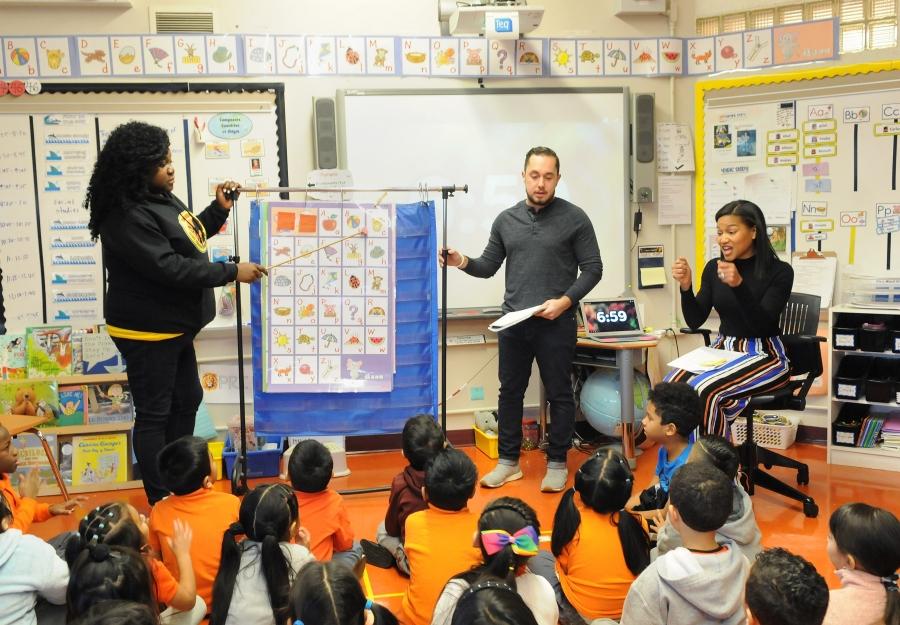
“Who has a word that rhymes with ‘five’?” speech teacher Marjorie James asks of a group of kindergarteners at the East Elmhurst Community School in Queens.
When one student enthusiastically waves a card with the word “sad” in the air, James points to her mouth so that he will pay attention to the shape of her lips as she emphasizes the sounds “ad” and “ive.”
“Do they sound the same?” she asks.
As part of a speech literacy initiative launched by the city Department of Education in 2014 in about 150 schools, James pushes into the school’s kindergarten Integrated Co-Teaching class three times a week and works closely with its teachers, Jasmine Moise and Jesse Ferreiro.
Speech Improvement Chapter Leader Caroline Murphy said the program is premised on the belief that all children can benefit from speech teachers’ strategies. “The goal is to bring the speech pathologist’s knowledge into the classroom to provide support for phonological awareness and introduce multiple modalities for all children to learn to read,” said Murphy. “We hope it will reduce the number of students referred for special education services.”
James focuses on a different class each year. She meets twice a week with the teachers to collaborate on literacy lesson plans and exchange ideas about how to bolster students’ phonological awareness — that is, their knowledge about the structures of the sounds of speech, a crucial foundation for learning to read.
With the support of the school’s principal, Rachel Staroba-Hallenbeck, over the past four years, James has been able to train classroom teachers to use strategies that draw from some of the programs she uses as a speech teacher. These include Sounds Sensible, which focuses on phonological awareness and phonics, and Lively Letters, a multisensory program that addresses phonemic awareness.
“We sit down together and talk about how I can add my perspective to what they’re doing,” says James. “For instance, when we’re teaching the sound of letters, teachers didn’t typically highlight what they were doing with their mouths, but that was the perspective I brought — to say something like, ‘I’m putting my lips together, so it must be the M sound.’”
In the kindergarten classroom, James and the teachers, along with paraprofessional Sheila Dominguez, meet with students in small groups to practice identifying rhyming words, segmenting syllables in sentences and words, and matching letters and sounds. In one group, students use Post-it notes to represent the number of words they hear in a sentence. In another, they practice identifying the onset and rime of a word to help them determine whether two words rhyme.
“It’s been nice for our kids to get to work with different teachers, and it’s been great to have Ms. James as a resource to teach us speech activities,” says Ferreiro.
James has also had the opportunity to share resources from professional training with other teachers.
“Integrating her into the classroom provides a space for collaboration to have the best impact on students,” says Jessica Baity, the school’s chapter leader. “It’s been positive for the whole school.”